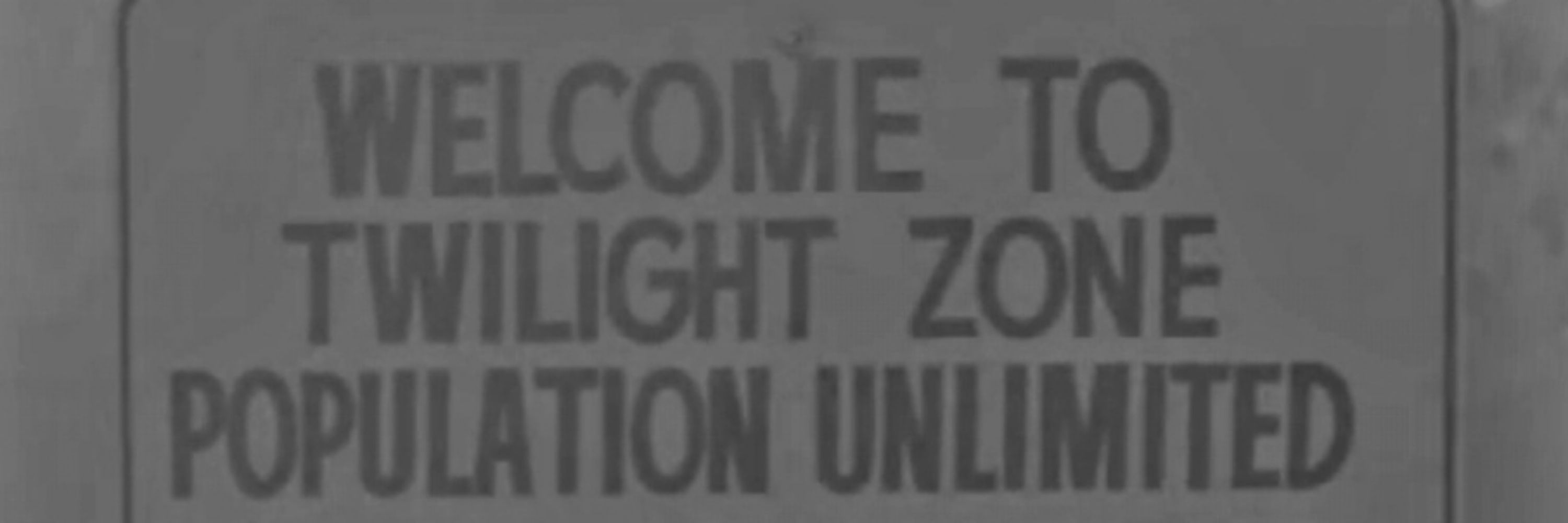
Rambles and tangents on culture here: https://arowofopengraves.co.uk/
Matt's other book 'The Vatican Verses Horror Movies' is also available 📖
Thanks again mate 😊🤘🏻👊🏻 #FulciLives 🙌🏻

Matt's other book 'The Vatican Verses Horror Movies' is also available 📖
Thanks again mate 😊🤘🏻👊🏻 #FulciLives 🙌🏻
9am-10am Making faces at emails
10am-11.30am Scrying
11.30am-11.31am Astral planing, although it seems like I’m gone days
11.31am-1pm Thinking about lunch
1pm Luncheon taken
2pm-5pm Consulting grimoire bound with human skin
9am-10am Making faces at emails
10am-11.30am Scrying
11.30am-11.31am Astral planing, although it seems like I’m gone days
11.31am-1pm Thinking about lunch
1pm Luncheon taken
2pm-5pm Consulting grimoire bound with human skin
The first episode of this short-lived ABC anthology series predicts the corporate embrace of A.I. w/ startling prescience.
Robert Webber, Mary Frann, and Richard Anderson star. On Internet Archive: archive.org/details/dark... #FilmSky #HorrorSky

The first episode of this short-lived ABC anthology series predicts the corporate embrace of A.I. w/ startling prescience.
Robert Webber, Mary Frann, and Richard Anderson star. On Internet Archive: archive.org/details/dark... #FilmSky #HorrorSky








Marion Davies!
Marion Davies!
(Trying to acclimate myself to my dreaded cinematic foe, the musical, and it's going well)
(Trying to acclimate myself to my dreaded cinematic foe, the musical, and it's going well)
ROSEMARY’S BABY meets folk horror in this Aaron Spelling TV movie w/ Hope Lange, Paul Burke, John Carradine + Cindy Eilbacher.
Genuinely spooky w/ some plot points that make it a delightfully perverse choice for Thanksgiving week 55 years ago. #FilmSky









BEYOND EXCITED to read my featured interview in the latest issue of @ruemorguemag.bsky.social
My thanks go out to @monicaskuebler.bsky.social & @necromandrea.bsky.social this is an absolute dream come true

BEYOND EXCITED to read my featured interview in the latest issue of @ruemorguemag.bsky.social
My thanks go out to @monicaskuebler.bsky.social & @necromandrea.bsky.social this is an absolute dream come true





I've seen this movie must be 50 times no joke! I love it! It's a classic fun, camp, humorous horror movie that everybody loves cause of the absurdity, but oh boy I'm shooketh hear me out in comments 👇🏻
PIECES (1982) 📽
dir. Juan Piquer Simón
The original uncensored directors cut presented in Spanish with original score by Librado Pastor cause.... I ain't seen it 🤷♂️

I've seen this movie must be 50 times no joke! I love it! It's a classic fun, camp, humorous horror movie that everybody loves cause of the absurdity, but oh boy I'm shooketh hear me out in comments 👇🏻










She responded with a long memory - I had totally forgotten my English grandfather was a fish and chip shop owner for a while in the 1960’s (many decades later he was head chef for Ipswich Town FC restaurant)
I like the chairs waiting

She responded with a long memory - I had totally forgotten my English grandfather was a fish and chip shop owner for a while in the 1960’s (many decades later he was head chef for Ipswich Town FC restaurant)
I like the chairs waiting
Shitty people get what's coming to 'em. But also, cannibalism! Ghost children! Revenge! Grave robbing! You know, the fun stuff.
Links below

Shitty people get what's coming to 'em. But also, cannibalism! Ghost children! Revenge! Grave robbing! You know, the fun stuff.
Links below


